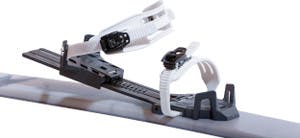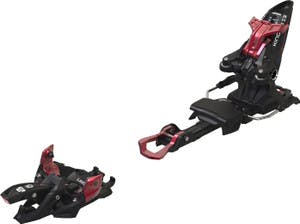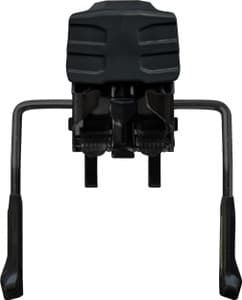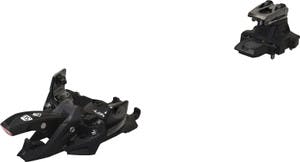Ski touring & backcountry ski bindings
- (0)Fischer Tour Classic Free Bindings - Unisex$377.94$755.95
- (72)Salomon S/Lab Shift MNC 13 Bindings with Brakes$419.93$699.95
- (16)Dynafit Radical Bindings$499.95
- (0)Fischer Tour Classic Bindings - Unisex$377.94$755.95
- (0)Fischer Tour Classic St Bindings - Unisex$377.94$755.95
- (11)Dynafit Speed Turn Bindings$379.95
- (19)Dynafit Ski Crampon$109.95 - $119.95
- (0)ATK AL13 Freeride Spacer$99.95
- (0)Marker Alpinist Free 13 Bindings without Brakes$599.95
- (0)ATK Raider 12 SL Bindings with Brakes - Unisex$769.95
- (1)Fritschi Tecton 13 Bindings with Breaks$829.95
- (0)ATK Crest 10 Bindings with Brakes - Unisex$694.95
- (1)Atomic Shift2 13 MN Bindings with Brakes - Unisex$749.95
- (0)ATK Raider 13 Evo Bindings with Brakes - Unisex$989.95
- (0)ATK Freeraider 15 Evo Bindings with Brakes - Unisex$1,049.95
- (1)Salomon S/Lab Shift2 13 MN Bindings with Brakes$749.95
- (21)Dynafit ST Rotation 10 Bindings$599.95
- (0)Fischer TRANSALP TOUR - Unisex$498.94$997.95
- (0)Dynafit Seven Summits Bindings - Unisex$449.95
- (0)Dynafit Seven Summits+ Bindings$529.95
- (1)Salomon S/Lab Shift2 10 MN Bindings with Brakes$699.95
- (0)Fritschi Xenic Plus 10 Bindings with Brakes$649.95
- (10)Dynafit ST Rotation 14 Bindings$649.95
- (0)Marker Kingpin 10 Bindings$769.95
- (1)OAC Skis EA Binding 2.0 - Unisex$209.95
- (0)Marker Kingpin 13 Bindings$819.95
- (0)Atomic Shift2 10 MN Bindings with Brakes - Unisex$699.95
- (3)Dynafit Ridge Bindings - Unisex$699.95
- (0)G3 ZED Brakes$67.94$104.95
- (1)Marker Alpinist 12 without Brake$549.95
- (0)Dynafit Backlight Pro Bindings without Brakes$599.95
- (0)Dynafit TLT Speed Superlite 2.0 Brakes$48.97$94.95
- ‹
- 1
- ›
Compare (0)
Backcountry ski bindings for days on the trails
If you’re planning on exploring the backcountry this winter, ski bindings are a critical component of your ski setup. The right bindings ensure that your gear stays secure while supporting both uphill and downhill performance. Proper ski bindings not only improve efficiency but also enhance your overall safety in all types of snowy conditions. With bindings from brands like Dynafit, ATK, Salomon and more, MEC is your top spot to shop for the best gear for winter adventures.
Choosing the right bindings
While researching how to choose ski bindings, it’s important to note how crucial they are to a safe skiing experience. They’ll keep your boots and skis firmly attached when you’re charging downhill, and can release your skis if you wipeout mid-run, which can help save your from serious injuries. Make sure you research where you’re planning on skiing, what kinds of ski boots you have, your ski width, the DIN setting and how exactly to adjust bindings without help.
Tech bindings
Tech bindings, also known as “Dynafit bindings,” were originally pioneered by the Dynafit brand but are now widely available from other manufacturers. They use pins in the toe and heel pieces to attach to compatible ski boots, allowing the boot’s heel to release for uphill travel. As the lightest touring binding option, they’re ideal for quick ascents, though they often omit brakes to save weight (with add-ons available). While they require practice to master, especially in deep snow, they’re a top choice for seasoned backcountry skiers prioritizing lightweight gear.
Hybrid bindings
Hybrid bindings combine a traditional alpine DIN heel piece with a tech-style toe pin, offering both touring efficiency and strong downhill performance. They’re slightly heavier than minimalist tech bindings but usually include brakes for added convenience. Intuitive and easy to use, some models let you switch between ski and tour modes without stepping out. These bindings are great for newcomers to backcountry touring or skiers who want versatile gear that works for both resort skiing and occasional off-piste adventures.
Telemark bindings
Telemark bindings always feature a free heel for both ascents and descents, offering a unique skiing experience. They come in two main types: 75mm bindings with a springy cable around the boot, which lack lateral release and may increase knee injury risk; and NTN (New Telemark Norm) bindings, which use a springless plate system to secure the boot's forefoot and include lateral release for added safety.
































